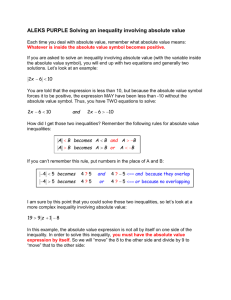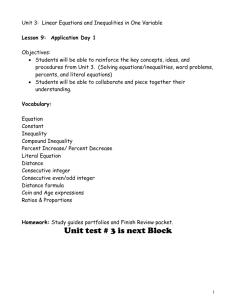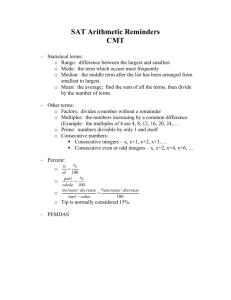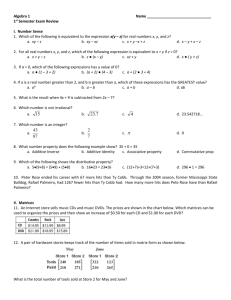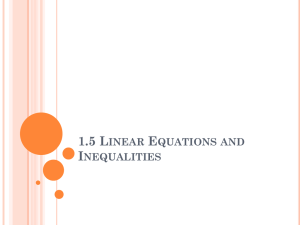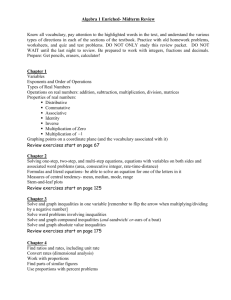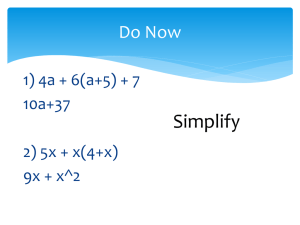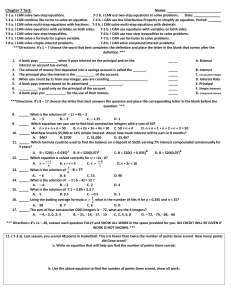Miscellaneous Math Facts
advertisement
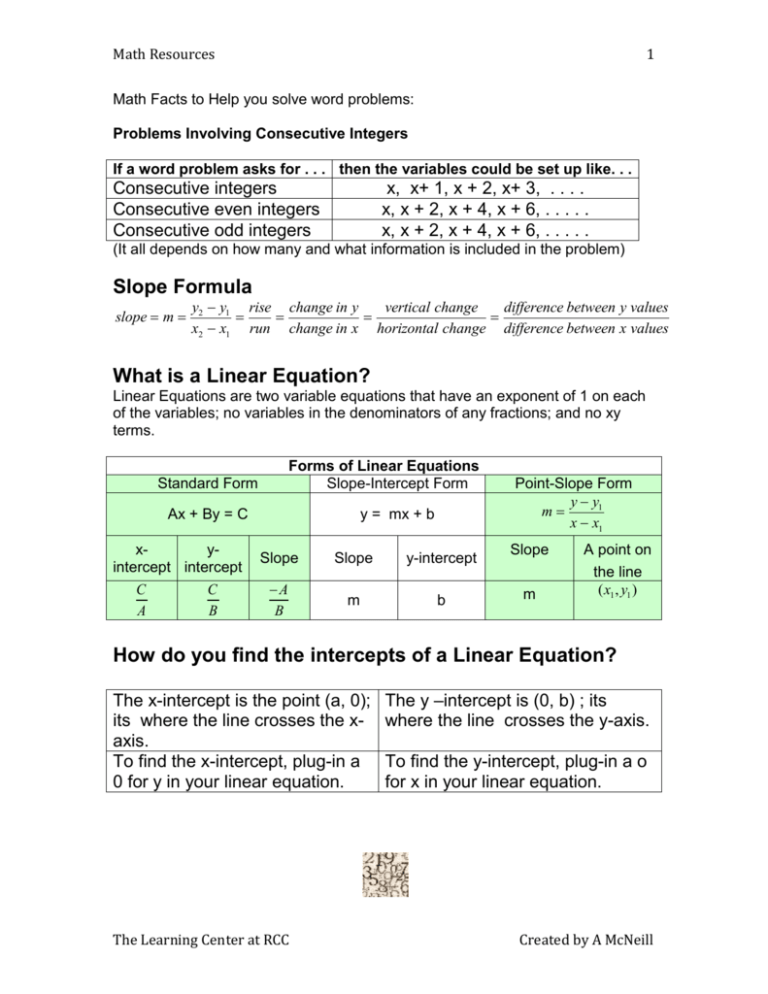
1 Math Resources Math Facts to Help you solve word problems: Problems Involving Consecutive Integers If a word problem asks for . . . then the variables could be set up like. . . Consecutive integers Consecutive even integers Consecutive odd integers x, x+ 1, x + 2, x+ 3, . . . . x, x + 2, x + 4, x + 6, . . . . . x, x + 2, x + 4, x + 6, . . . . . (It all depends on how many and what information is included in the problem) Slope Formula slope m y2 y1 rise change in y vertical change difference between y values x2 x1 run change in x horizontal change difference between x values What is a Linear Equation? Linear Equations are two variable equations that have an exponent of 1 on each of the variables; no variables in the denominators of any fractions; and no xy terms. Forms of Linear Equations Slope-Intercept Form Standard Form Ax + By = C xyintercept intercept C C A B y = mx + b Slope Slope y-intercept A B m b Point-Slope Form y y1 m x x1 Slope m A point on the line (x1 , y1 ) How do you find the intercepts of a Linear Equation? The x-intercept is the point (a, 0); its where the line crosses the xaxis. To find the x-intercept, plug-in a 0 for y in your linear equation. The Learning Center at RCC The y –intercept is (0, b) ; its where the line crosses the y-axis. To find the y-intercept, plug-in a o for x in your linear equation. Created by A McNeill 2 Math Resources Linear Equation Facts Parallel Lines Perpendicular Lines Lines have equal slopes; the slopes are the exact SAME number. Parallel horizontal lines have equations like y = a and y = b where a b; where a and b are any number. Lines have slopes that are opposites and reciprocals. If one equation in a pair of perpendicular lines is horizontal (of the form y = a), then other has to be vertical (of the form x = d); where a and d are any number. With perpendicular lines, if you multiply the slopes you get -1 as your answer. Parallel vertical lines have equations like x = a and x = b, where a b; where a and b are any number. Inequalities Anyone? Please note, inequalities solve just like an equation, but you must remember to change the direction of the inequality symbol if you multiply or divide by a NEGATIVE! Graphing Single Variable Inequalities on a Number Line < or > < or > Open Circle Closed Circle Interval Notation: ( ) Interval Notation: [ ] It will always be true that if the variable is on the left side of the inequality symbol, then shade the number line in the direction that the inequality symbol is pointing. However, if the variable is on the right side of the inequality symbol, then shade the number line in the opposite direction that the symbol is pointing. The Learning Center at RCC Created by A McNeill
